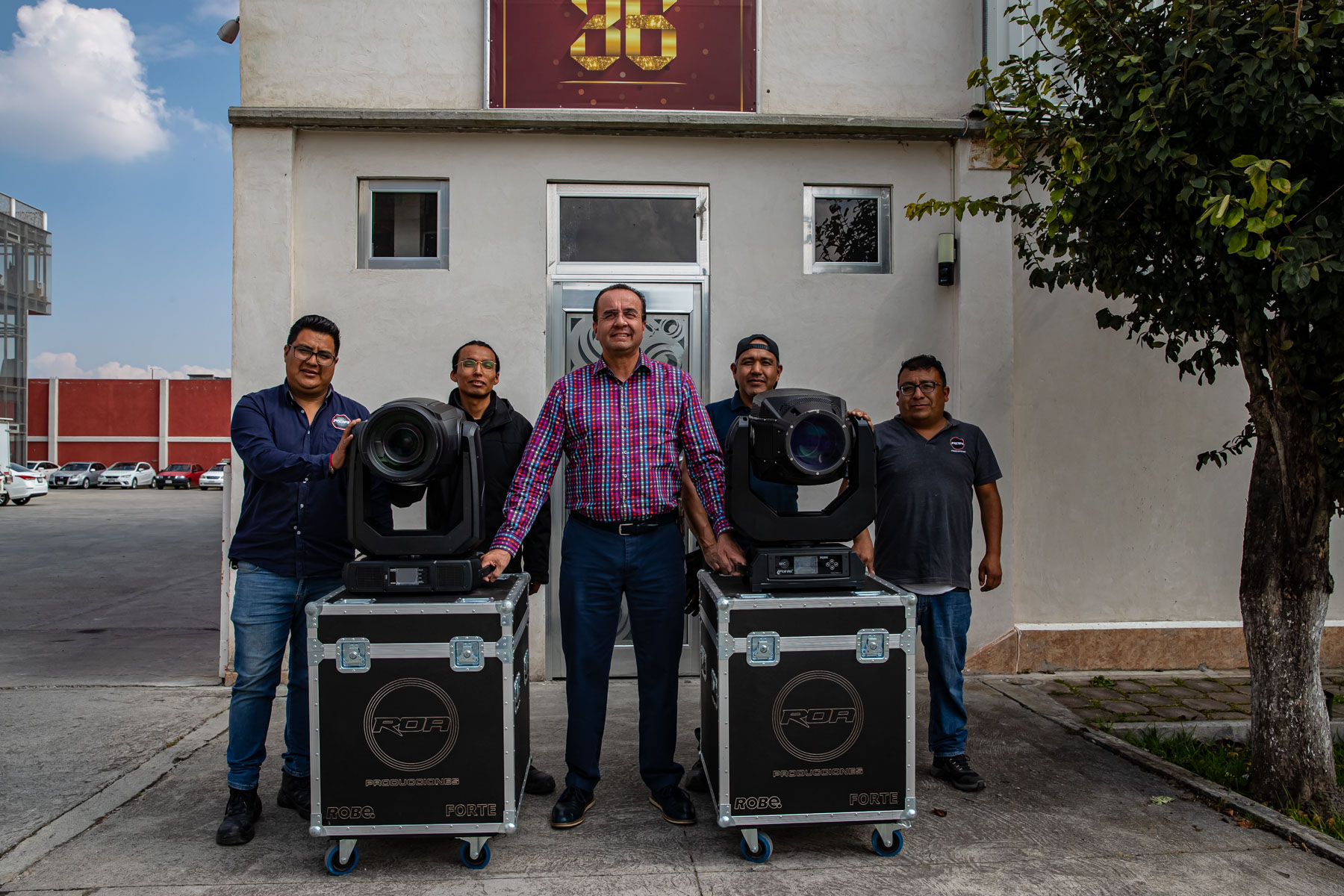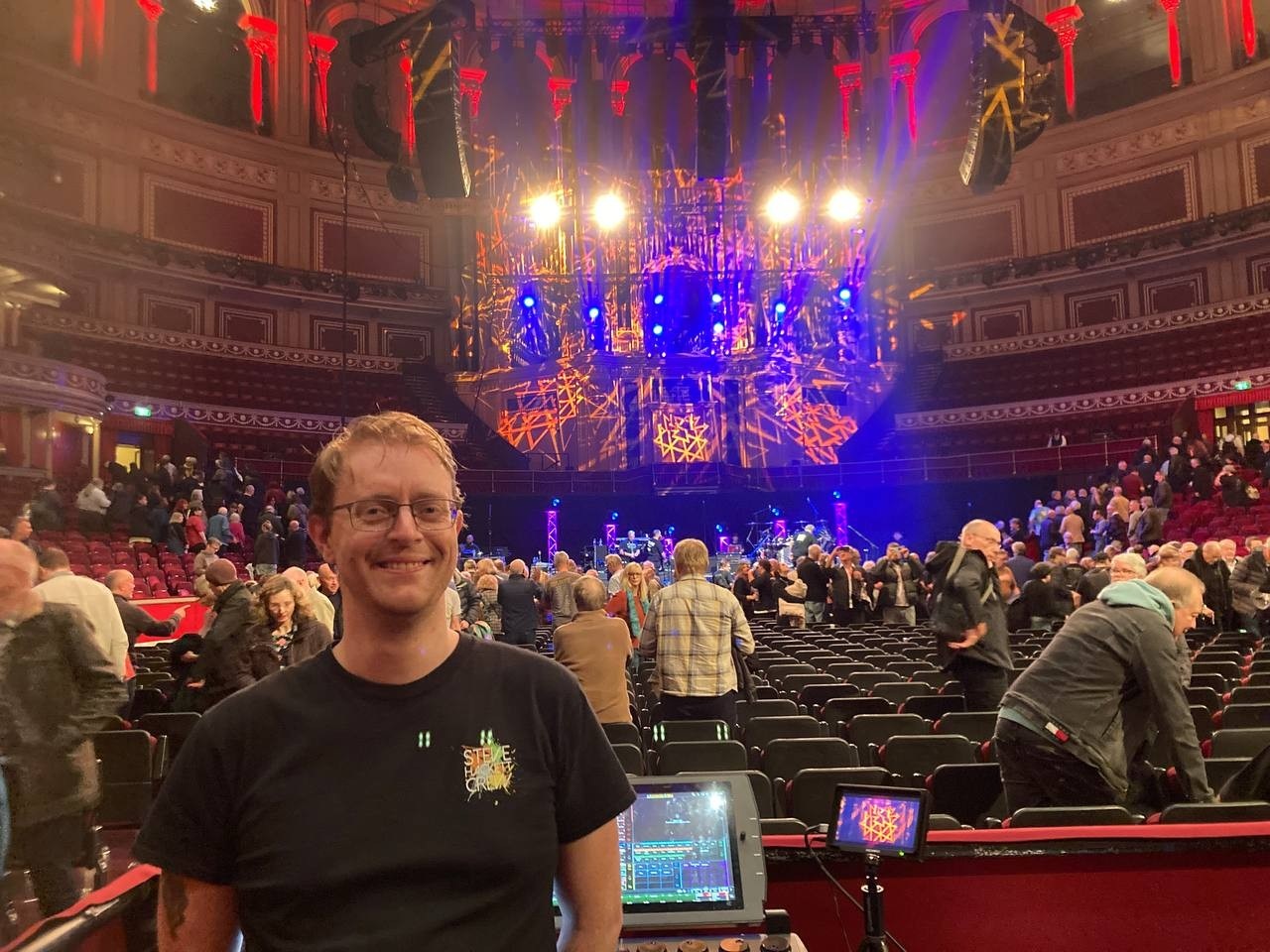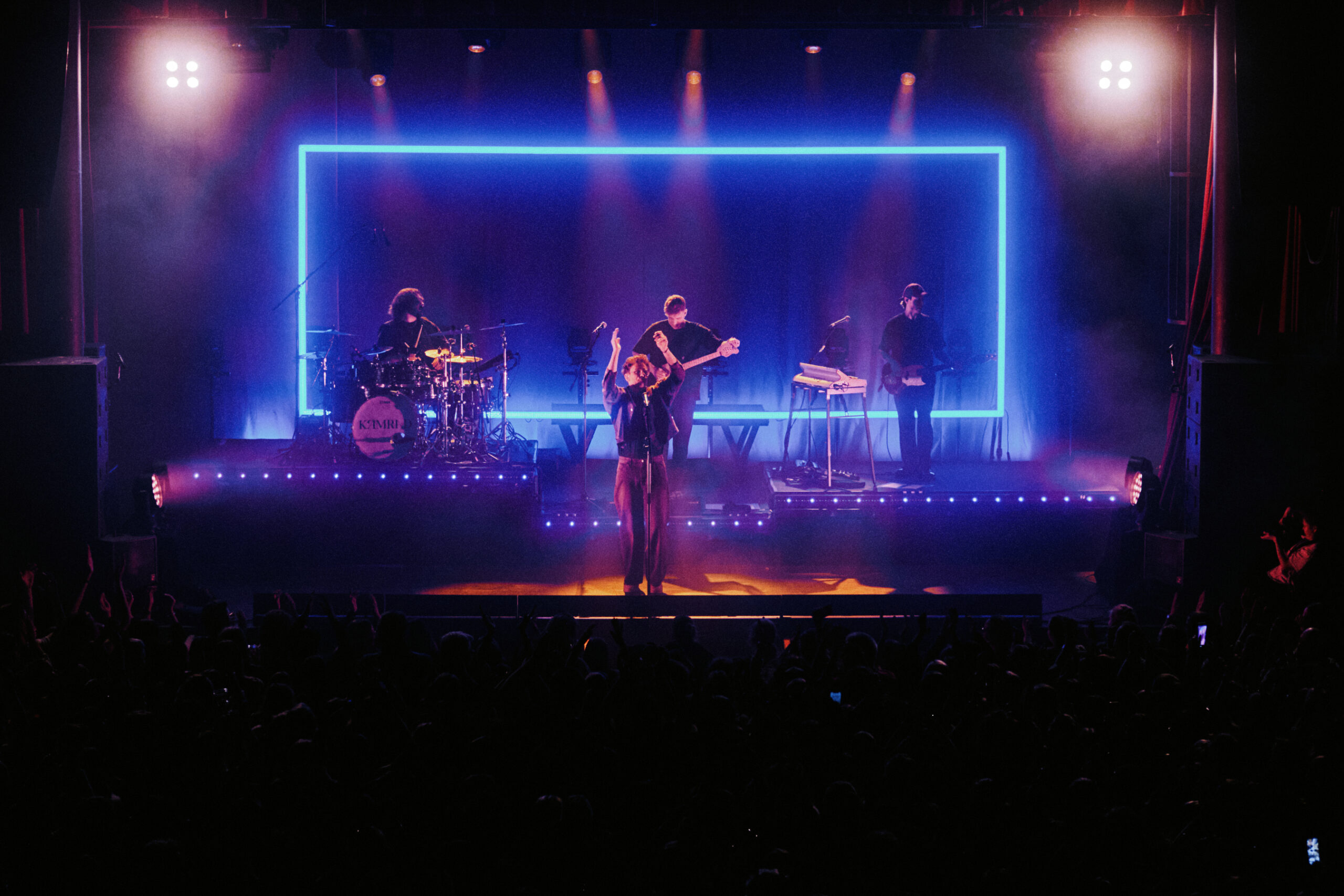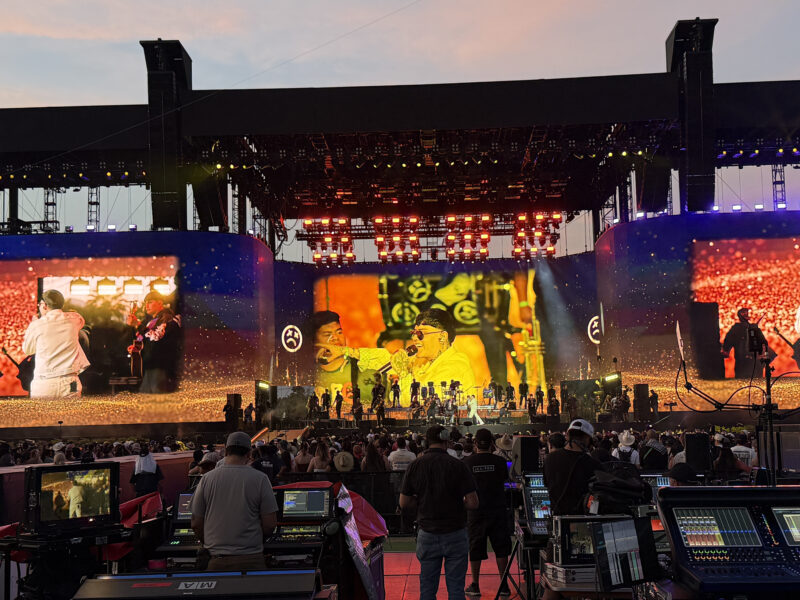
Mexican rapper and songwriter Junior H took to Coachella’s main stage this year, playing material from his latest album, the wildly popular $ad Boyz 4 Life II. Since self-releasing his debut album in 2019, Junior H has established himself as a pioneer of the burgeoning corridos tumbados genre, and this high-profile appearance saw him share the bill with Megan Thee Stallion and Post Malone.
For his first solo performance at the festival, Junior H wanted to bring the aesthetic of his Sad Boyz album, along with its Mexican cultural perspective, to the stage, creating an underground Latin trap atmosphere in the Colorado desert. To lead the creative concept and video direction of this immersive visual journey, Rancho Humilde—the renowned Latin record label that signed Junior H shortly after his debut album—contacted Charly Camina and his team.
Camina previously collaborated with the label on visuals for three Junior H songs where he developed eye-catching Notch effects. This small project built a lasting trust between the pair, and working on Junior H’s highly anticipated Coachella set was a no-brainer. Camina explains, in his own words, how he helped to create the show of a lifetime for Junior H and his fans.
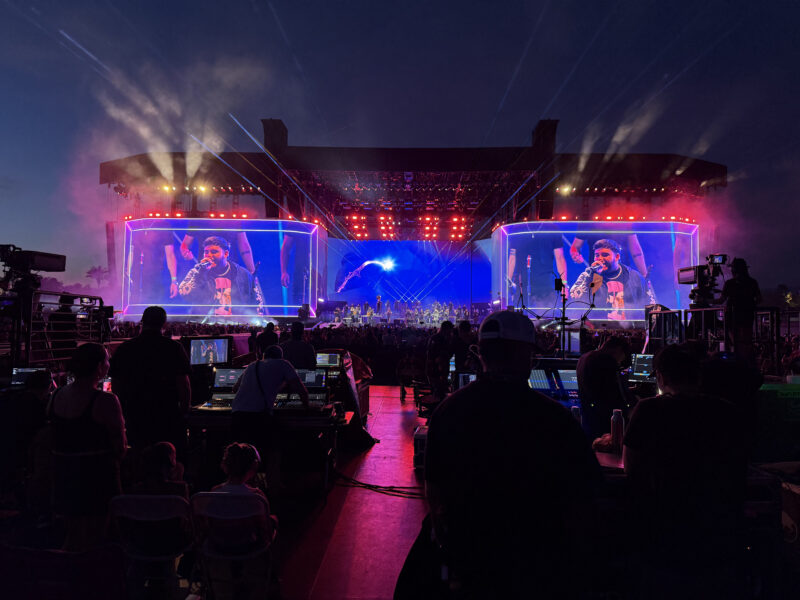
Charly Camina, Video Director
Setting the Stage
From my earliest conversations with the team at Rancho Humilde, the objective was clear: we needed to create a narrative-driven video show to match the emotional arc of the set. Junior H’s performance would draw from his Sad Boyz material, songs about being in love, and the ensuing heartbreak. He wanted to bring that feeling to Coachella’s gigantic main stage. That meant creating a dark, emotional, and immersive atmosphere as the California sun sets over the desert.
Festivals present a unique challenge in terms of visuals, as the stage only exists for the duration of the event, making planning ahead difficult. Plus, with numerous artists performing throughout the day, quick and effective changeovers are an absolute priority. Coachella’s main stage comes with its own set of technical demands, too. The stage is among the world’s biggest, measuring approximately 400’ wide, 410’ deep, and nearly 100’ tall, with a sophisticated lighting system and colossal curved LED screens. As if all that wasn’t enough, we had to deliver the project in just four weeks, from initial concept through to final rehearsals.
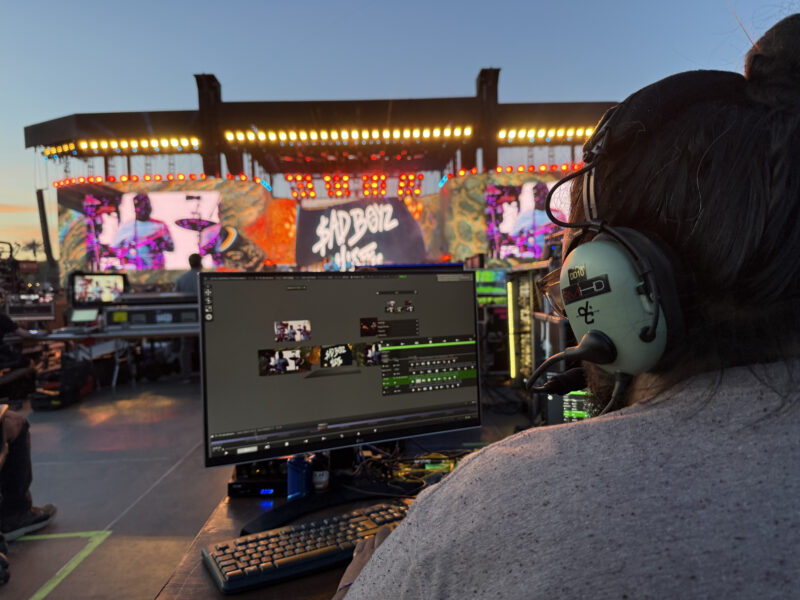
Getting to Work
To begin with, we developed a visual storyline for each song in Junior H’s set. We needed to match the mood and intensity of the lyrics to the particular aesthetic associated with the Sad Boyz album. This resulted in visuals depicting everything from gothic churches and neon cityscapes to the moon in the night sky.
With the tight turnaround and limited margin for error on the day, we knew we’d need a robust and reliable toolset. We built real-time content in Unreal Engine, which we brought into Disguise’s Designer software. Smooth integration with Notch enabled us to add dynamic FX that heightened the in-camera footage of Junior H and his band. Disguise’s new plugin framework in Designer meant I could also bridge my own, in-house software—StageSync—without any issues.
It became clear that the sun would be setting over the Colorado Desert about 10 or 15 minutes into the set, and we had to plan accordingly. When we started building in Unreal Engine, we started with more vivid and colorful visuals, gradually shifting tone to introduce darker, moodier elements that would appear as the natural light faded. This transition into nighttime was fully integrated into the visual storytelling.
Once the show was built, we used Designer to simulate and pre-program the entire set before we stepped into rehearsals. StageSync enabled synchronized cueing and triggering, so the operation of the show was fluid, efficient, and most importantly, in time with other elements like lighting and pyro. Visualizing the show environment meant we could make quick creative decisions that proved crucial for client approvals. In the end, we were able to arrive on set with all the visuals validated.
Under the Hood
When it came to hardware, we tested multiple configurations, including Disguise’s VX 4+ and GX 3 media servers. In the end, we opted to use the Disguise EX3+, which was a first for us in a live environment—the performance of which far exceeded our expectations under high-stress conditions.
In my opinion, it’s one of the most stable and powerful media servers in the industry. Its ability to deliver pixel-perfect output while running heavy Unreal Engine visuals and real-time Notch effects without any frame drops genuinely impressed me and the team.
The Crowd Goes Wild
Now that Coachella is over, I am so proud of how our visuals came together with the music and lighting to elevate the emotion on stage. We created some environments that, in combination with the music and Junior’s presence, truly felt like visual poetry.
Both the artist’s management and his team gave us amazing feedback, and seeing the public react so positively on social media—not only praising Junior H’s performance but also calling out the visuals—was just incredible. It felt like the storytelling really resonated with the audience.
Seeing a Latin artist like Junior H deliver such an emotional and high-tech show at Coachella was incredibly rewarding. Being part of a team that brought a unique cultural perspective of a young Mexican artist to one of the biggest music stages in the world is something I’m deeply proud of.
